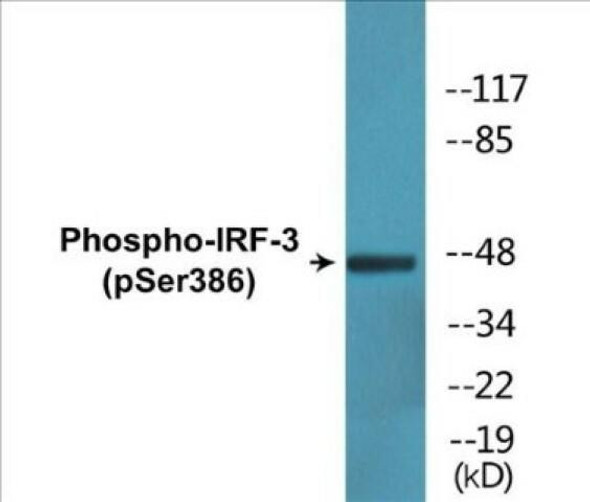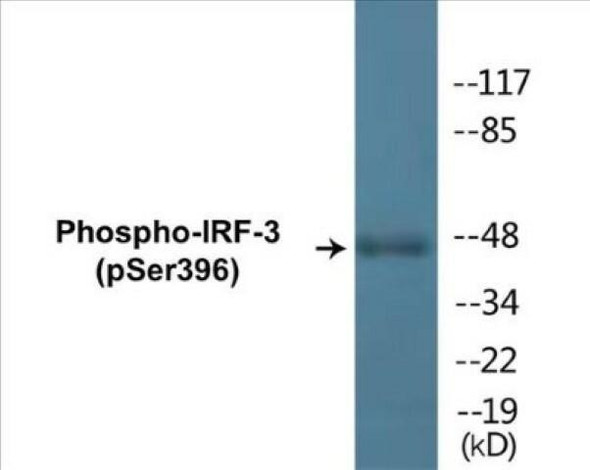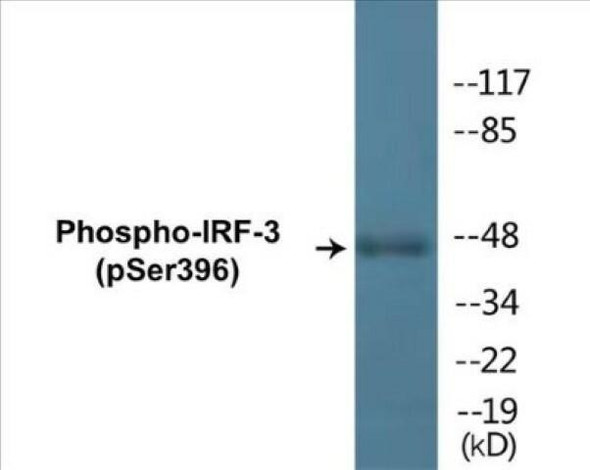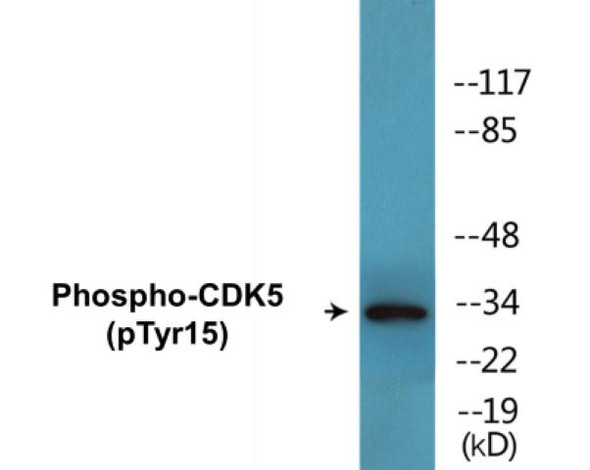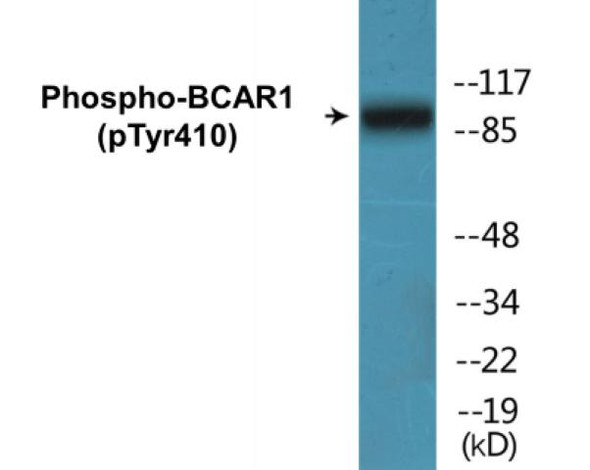IRF-3 (Phospho-Ser386) Fluorometric Cell-Based ELISA Kit
- SKU:
- FBCAB00091
- Product Type:
- ELISA Kit
- ELISA Type:
- Cell Based Phospho Specific
- Reactivity:
- Human
- Mouse
- Rat
- Detection Method:
- Fluorometric
Description
IRF-3 (Phospho-Ser386) Cell-Based ELISA Kit
The IRF-3 (Phospho-Ser386) Cell-Based ELISA Kit is a convenient, lysate- free, high throughput and sensitive assay kit that can monitor IRF-3 phosphorylation and expression profile in cells. The kit can be used for measuring the relative amounts of phosphorylated IRF-3 in cultured cells as well as screening for the effects that various treatments, inhibitors (ie. siRNA or chemicals), or activators have on IRF-3 phosphorylation.
How does our IRF-3 (Phospho-Ser386) Fluorometric Cell-Based ELISA Kit work?
Qualitative determination of IRF-3 (Phospho-Ser386) concentration is achieved by an indirect ELISA format. In essence, IRF-3 (Phospho-Ser386) is captured by IRF-3 (Phospho-Ser386)-specific primary (1°) antibodies while Dye 1-conjugated and Dye 2-conjugated secondary (2°) antibodies bind the Fc region of the 1° antibody. Through this binding, the dye conjugated to the 2° antibody can emit light at a certain wavelength given proper excitation, hence allowing for a fluorometric detection method. Due to the qualitative nature of the Cell-Based ELISA, multiple normalization methods are needed:
| 1. | A monoclonal antibody specific for human GAPDH is included to serve as an internal positive control in normalizing the target RFU values. |
| 2. | An antibody against the nonphosphorylated counterpart of IRF-3 (Phospho-Ser386) is also provided for normalization purposes. The RFU values obtained for non-phosphorylated IRF-3 can be used to normalize the RFU value for phosphorylated IRF-3. |
IRF-3 (Phospho-Ser386) Fluorometric Cell-Based ELISA Kit -Information
| Product Name: | IRF-3 (Phospho-Ser386) Fluorometric Cell-Based ELISA Kit |
| Product Code/SKU: | FBCAB00091 |
| Description: | The IRF-3 (Phospho-Ser386) Fluorometric Cell-Based Phospho ELISA Kit is a convenient, lysate-free, high throughput and sensitive assay kit that can monitor IRF-3 (Phospho-Ser386) protein phosphorylation and expression profile in cells. The kit can be used for measuring the relative amounts of phosphorylated IRF-3 (Phospho-Ser386) in cultured cells as well as screening for the effects that various treatments, inhibitors (ie. siRNA or chemicals, or activators have on IRF3 phosphorylation. |
| Dynamic Range: | > 5000 Cells |
| Detection Method: | Fluorometric |
| Storage/Stability: | 4°C/6 Months |
| Reactivity: | Human |
| Assay Type: | Cell-Based ELISA |
| Database Links: | Gene ID: 3661, UniProt ID: Q14653, OMIM #: 603734, Unigene #: Hs.75254 |
| Format: | Two 96-Well Plates |
| NCBI Gene Symbol: | IRF3 |
| Sub Type: | Phospho |
| Target Name: | Phospho-IRF-3 (Ser386) |
Kit Principle
Figure: Schematic representation of Assay Genie Cell-Based Fluorometric ELISA principle
Kit components | Quantity |
| 96-Well Black Cell CultureClear-Bottom Microplate | 2 plates |
| 10X TBS | 24 ml |
| Quenching Buffer | 24 ml |
| Blocking Buffer | 50 ml |
| 15X Wash Buffer | 50 ml |
| Primary Antibody Diluent | 12 ml |
| 100x Anti-Phospho Target Antibody | 60 µl |
| 100x Anti-Target Antibody | 60 µl |
| Anti-GAPDH Antibody | 110 µl |
| Dye-1 Conjugated Anti-Rabbit IgG Antibody | 6 ml |
| Dye-2 Conjugated Anti-Mouse IgG Antibody | 6 ml |
| Adhesive Plate Seals | 2 seals |
Additional equipment and materials required
The following materials and/or equipment are NOT provided in this kit but are necessary to successfully conduct the experiment:
- Fluorescent plate reader with two channels at Ex/Em: 651/667 and 495/521
- Micropipettes capable of measuring volumes from 1 µl to 1 ml
- Deionized or sterile water (ddH2O)
- 37% formaldehyde (Sigma Cat# F-8775) or formaldehyde from other sources
- Squirt bottle, manifold dispenser, multichannel pipette reservoir or automated microplate washer
- Graph paper or computer software capable of generating or displaying logarithmic functions
- Absorbent papers or vacuum aspirator
- Test tubes or microfuge tubes capable of storing ≥1 ml
- Poly-L-Lysine (Sigma Cat# P4832 for suspension cells)
- Orbital shaker (optional)
Kit Protocol
This is a summarized version of the kit protocol. Please view the technical manual of this kit for information on sample preparation, reagent preparation and plate lay out.
| 1. | Seed 200 µl of desired cell concentration in culture medium into each well of the 96-well plates. For suspension cells and loosely attached cells, coat the plates with 100 µl of 10 µg/ml Poly-L-Lysine (not included) to each well of a 96-well plate for 30 minutes at 37°C prior to adding cells. |
| 2. | Incubate the cells for overnight at 37°C, 5% CO2. |
| 3. | Treat the cells as desired. |
| 4. | Remove the cell culture medium and rinse with 200 µl of 1x TBS, twice. |
| 5. | Fix the cells by incubating with 100 µl of Fixing Solution for 20 minutes at room temperature. The 4% formaldehyde is used for adherent cells and 8% formaldehyde is used for suspension cells and loosely attached cells. |
| 6. | Remove the Fixing Solution and wash the plate 3 times with 200 µl 1x Wash Buffer for 3 minutes. The plate can be stored at 4°C for a week. |
| 7. | Add 100 µl of Quenching Buffer and incubate for 20 minutes at room temperature. |
| 8. | Wash the plate 3 times with 1x Wash Buffer for 3 minutes each time. |
| 9. | Dispense 200 µl of Blocking Buffer and incubate for 1 hour at room temperature. |
| 10. | Wash 3 times with 200 µl of 1x Wash Buffer for 3 minutes each time. |
| 11. | Add 50 µl of Primary Antibody Mixture P to corresponding wells for IRF-3 (Phospho-Ser386) detection. Add 50 µl of Primary Antibody Mixture NP to the corresponding wells for total IRF-3 detection. Cover the plate with parafilm and incubate for 16 hours (overnight) at 4°C. If the target expression is known to be high, incubate for 2 hours at room temperature. |
| 12. | Wash 3 times with 200 µl of 1x Wash Buffer for 3 minutes each time. |
| 13. | Add 50 ul of Secondary Antibody Mixture to corresponding wells and incubate for 1.5 hours at room temperature in the dark. |
| 14. | Wash 3 times with 200 µl of 1x Wash Buffer for 3 minutes each time. |
| 15. | Read the plate(s) at Ex/Em: 651/667 (Dye 1) and 495/521 (Dye 2). Shield plates from direct light exposure. |
| 16. | Wash 3 times with 200 µl of 1x Wash Buffer for 5 minutes each time. |
IRF-3 (Phospho-Ser386) - Protein Information
| UniProt Protein Function: | IRF3: interferon regulatory factor 3, a member of the interferon regulatory transcription factor (IRF) family. IRF3 is found in an inactive cytoplasmic form that upon serine/threonine phosphorylation forms a complex with CREBBP. This complex translocates to the nucleus and activates the transcription of interferons alpha and beta, as well as other interferon-induced genes. |
| UniProt Protein Details: | Protein type:DNA-binding; Transcription factor Chromosomal Location of Human Ortholog: 19q13.3-q13.4 Cellular Component: nucleoplasm; cytoplasm; nucleus; cytosol Molecular Function:identical protein binding; protein binding; protein homodimerization activity; DNA binding; transcription cofactor activity; transcription factor activity Biological Process: transcription from RNA polymerase II promoter; negative regulation of interferon-beta biosynthetic process; positive regulation of I-kappaB kinase/NF-kappaB cascade; viral reproduction; apoptosis; MyD88-independent toll-like receptor signaling pathway; cytokine and chemokine mediated signaling pathway; toll-like receptor 3 signaling pathway; negative regulation of transcription from RNA polymerase II promoter; negative regulation of defense response to virus by host; response to exogenous dsRNA; positive regulation of interferon type I production; lipopolysaccharide-mediated signaling pathway; toll-like receptor signaling pathway; positive regulation of interferon-beta production; innate immune response; interferon type I biosynthetic process; defense response to virus; toll-like receptor 4 signaling pathway; response to DNA damage stimulus; negative regulation of interferon type I production; positive regulation of interferon-alpha production; positive regulation of cytokine secretion Disease: Herpes Simplex Encephalitis, Susceptibility To, 7 |
| NCBI Summary: | This gene encodes a member of the interferon regulatory transcription factor (IRF) family. The encoded protein is found in an inactive cytoplasmic form that upon serine/threonine phosphorylation forms a complex with CREBBP. This complex translocates to the nucleus and activates the transcription of interferons alpha and beta, as well as other interferon-induced genes. Alternatively spliced transcript variants encoding multiple isoforms have been observed for this gene. [provided by RefSeq, Nov 2011] |
| UniProt Code: | Q14653 |
| NCBI GenInfo Identifier: | 2497442 |
| NCBI Gene ID: | 3661 |
| NCBI Accession: | Q14653.1 |
| UniProt Secondary Accession: | Q14653,Q5FBY1, Q5FBY2, Q5FBY4, Q7Z5G6, A8K7L2, B2RAZ3 |
| UniProt Related Accession: | Q14653 |
| Molecular Weight: | 12,330 Da |
| NCBI Full Name: | Interferon regulatory factor 3 |
| NCBI Synonym Full Names: | interferon regulatory factor 3 |
| NCBI Official Symbol: | IRF3 |
| NCBI Protein Information: | interferon regulatory factor 3 |
| UniProt Protein Name: | Interferon regulatory factor 3 |
| Protein Family: | Interferon regulatory factor |
| UniProt Gene Name: | IRF3 |
| UniProt Entry Name: | IRF3_HUMAN |



